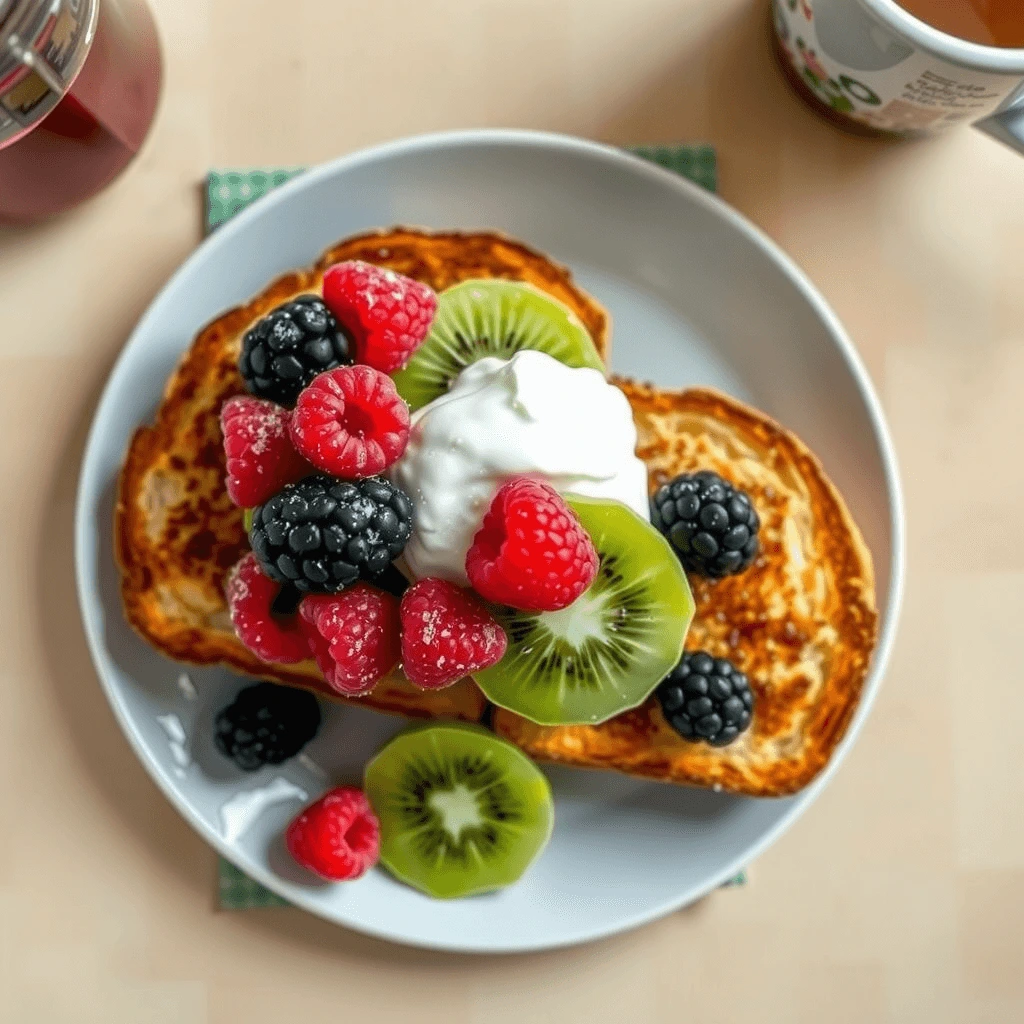There’s a kind of magic when you make sourdough French toast at home. The tang of good sourdough, the creaminess of custard, the crisp edges, it’s like breakfast that warmly holds you. If you’ve ever wondered how to bring that cozy experience into your kitchen, you’re in the right spot. I’m here to guide you with clear steps, clever tips, and mouthwatering inspiration so you can make the ultimate sourdough French toast, your crowd‑pleasing, Sunday‑morning hero.
Why Sourdough Works Wonderfully for French Toast
The Flavor You Feel
You know that slightly tangy, complex aroma that lingers after a good sourdough slice? That’s real flavor, born from fermentation and long rising time. It adds character that plain sandwich bread simply can’t match. When soaked just right, sourdough develops a custardy core with crisp edges that taste both rich and interesting.
A Texture That Holds Up
You don’t want mushy toast. Sourdough’s hearty crumb and firm crust help it maintain its shape when dunked and pan‑fried. You’ll get a dreamily soft interior and a satisfying golden crust, all in one.
Gentle on the Tummy (Sometimes)
If you’ve ever found regular bread kind of… harsh on your digestion, sourdough’s natural fermentation may feel gentler. It lowers acidity and might reduce bloating, you’ll wake up happy, not bloated.
Ingredients You’ll Need – Table Included

Below is your go‑to ingredients breakdown. Feel free to tweak to taste, but this combo nails richness without going over the top.
| Ingredient | Amount | Notes |
| Sourdough bread | 4–6 slices | Day‑old or lightly stale works best |
| Eggs | 3 large | Organic if available- adds richness and depth |
| Milk | ½ cup | Whole milk gives creamier custard |
| Heavy cream | ¼ cup | Optional- makes it extra indulgent |
| Ground cinnamon | 1 tsp | Warms it up- bloomed into the custard mix |
| Vanilla extract | 1 tsp | Pure for best flavor |
| Salt | ¼ tsp | Balances sweetness and boosts flavor |
| Butter | For frying | Unsalted-lets you control seasoning |
| Optional add‑ins | – | Orange zest, nutmeg, or a splash of maple syrup |
You’ve got both flexibility and foundation here, so trust your taste and adjust as you like.
Crafting the Perfect Sourdough French Toast Step by Step
1. Pick the Right Bread
Start with thick, ¾‑ to 1‑inch cuts of sourdough, especially if it’s a touch stale. That slightly dry texture absorbs custard just enough without collapsing, and gives you that creamy center with a crisp exterior.
2. Whisk Your Custard
Mix together the eggs, milk, a splash of cream if desired, cinnamon, vanilla extract, and a pinch of salt in a mixing bowl. Whisk until smooth. Let it rest 5–10 minutes so the cinnamon’s oils release their warm flavor, this little pause deepens the taste.
3. Soak Gently, Don’t Drown
Time your soak: around 25 seconds per side. That’s just enough for the custard to infiltrate without sogging the crumb. Test one slice, if it holds together yet feels fully moistened in the center, you’re golden.
4. Fry to Gooey‑Crisp Perfection
Heat a skillet over medium and melt a pat of butter until you smell its nutty aroma. Gently lay in your soaked slice and fry about 2–3 minutes per side. Aim for beautiful golden brown, not burnt. Tweak the heat if needed.
5. Dress It Up
Now comes the fun: topping. Stick with classics, maple syrup, a pat of butter, dusted powdered sugar, or get inventive with mascarpone and berries, caramelized bananas, or toasted nuts. Seasonal extras like apple compote or pumpkin‑spiced whipped cream make it feel special.
Smart Tips for Even Better Results
- Use day‑old slices: They soak wisely without going to mush.
- Never skip salt: It brings out all the flavors, even in sweet dishes.
- Let it rest after frying: A 30‑second break helps retain crispness before syrup drips in.
- Want extra crunch? After pan‑frying, pop slices into a 180 °C (350 °F) oven for 5 minutes.
- Freeze‑and‑reheat hack: Fry once, freeze on a tray with parchment between slices. Reheat in a toaster oven when the craving hits.
Mistakes You’ll Want to Dodge
Using Soft Bread
Avoid sandwich bread. It’s too fragile and can fall apart in the pan. Sourdough adds both the structure and that ideal balance of chewy and airy texture.
Soaking Forever
If your slice turns to goop, that’s a sign of over‑soaking. Keep it short, sweet, and firm enough to flip.
High Heat Drama
Cranked‑up heat may brown the surface, but leave the heart cold. Medium heat ensures golden, evenly cooked bliss.
Dazzling Variations to Explore

Vegan Sourdough French Toast
- Swap eggs with flax “eggs” (1 tbsp flax meal + 3 tbsp water, rest 5 min) or a plant‑based egg substitute.
- Use oat or almond milk.
- Fry with coconut oil, smells amazing and keeps it fluffy.
Savory Style
- Skip sweet spices and vanilla.
- Melt in some parmesan, sprinkle chopped herbs.
- Finish with sliced avocado, a soft-poached egg, or a light drizzle of olive oil.
Stuffed Delight
- Spread cream cheese or chocolate‑hazelnut spread between two slices, soak the sandwich, then fry like a cross between French toast and a grilled cheese.
Printable Recipe Card (At-a-Glance)
Prep Time: 10 minutes
Cook Time: 12 minutes
Serves: 2–3
- Whisk custard: eggs, milk, cream (if using), cinnamon, vanilla, salt.
- Let rest 5 min.
- Heat skillet with butter.
- Soak bread 25 sec per side.
- Fry 2–3 min per side.
- Serve with your favorite toppings.
FAQs: Common Questions About Sourdough French Toast
Can you use fresh sourdough bread?
If the bread is too soft, it might fall apart. Bread that’s a bit drier holds up better and soaks in the custard without breaking down.
What makes sourdough better than brioche?
Sourdough has a tang and texture contrast that taste both rich and lively, while brioche is sweeter and richer but doesn’t give the same depth.
Freeze‑and‑reheat, does it ruin the texture?
Not at all! Just freeze cooled slices with parchment between them. Reheat in a toaster or oven, crisp outside, soft inside, still amazing.
Best milk to use?
Whole milk or milk‑plus‑cream combo gives you that luxurious custard feel. Plant‑based milks like oat or almond work too, they add their own gentle flavor.
How do I keep it warm while cooking for company?
Line a baking sheet with foil, pop it in a 90–100 °C (200 °F) oven. As you fry slices, slide them in to stay toasty.
Wrapping It Up: Your Brunch Hero Awaits
There’s nothing ordinary about sourdough French toast, each slice is a golden invitation to slow down, breathe in the aroma, and savor a moment. With that subtly tangy base, creamy interior, and perfect crisp, you’ve created more than breakfast, you’ve created an experience. Whether you’re fueling a lazy weekend or serving up a simple indulgence to friends, this method will reward you over and over.
You’ve got the knowledge, the technique, and the confidence. Now grab that sourdough loaf, crank up the skillet, and treat yourself to brunch that tastes like a memory. And hey, once your kitchen smells like maple‑butter bliss and your plate is piled high, don’t forget to share your masterpiece (and maybe your favorite variation) on social or with loved ones. You’ve earned every golden bite, and bragging rights, too.
Next Step?
Loved how your kitchen smelled before the first forkful? Feel free to snap a pic and tag your brunch buddy, or better yet, send this guide to someone you know could use a Sunday‑morning upgrade. And when you’ve perfected your favorite combo, maybe cinnamon‑berry or stuffed‑with‑mascarpone, drop me a note. I’d love to keep building on your brunch adventures.
LEAVE A COMMENT
There are no reviews yet. Be the first one to write one.

